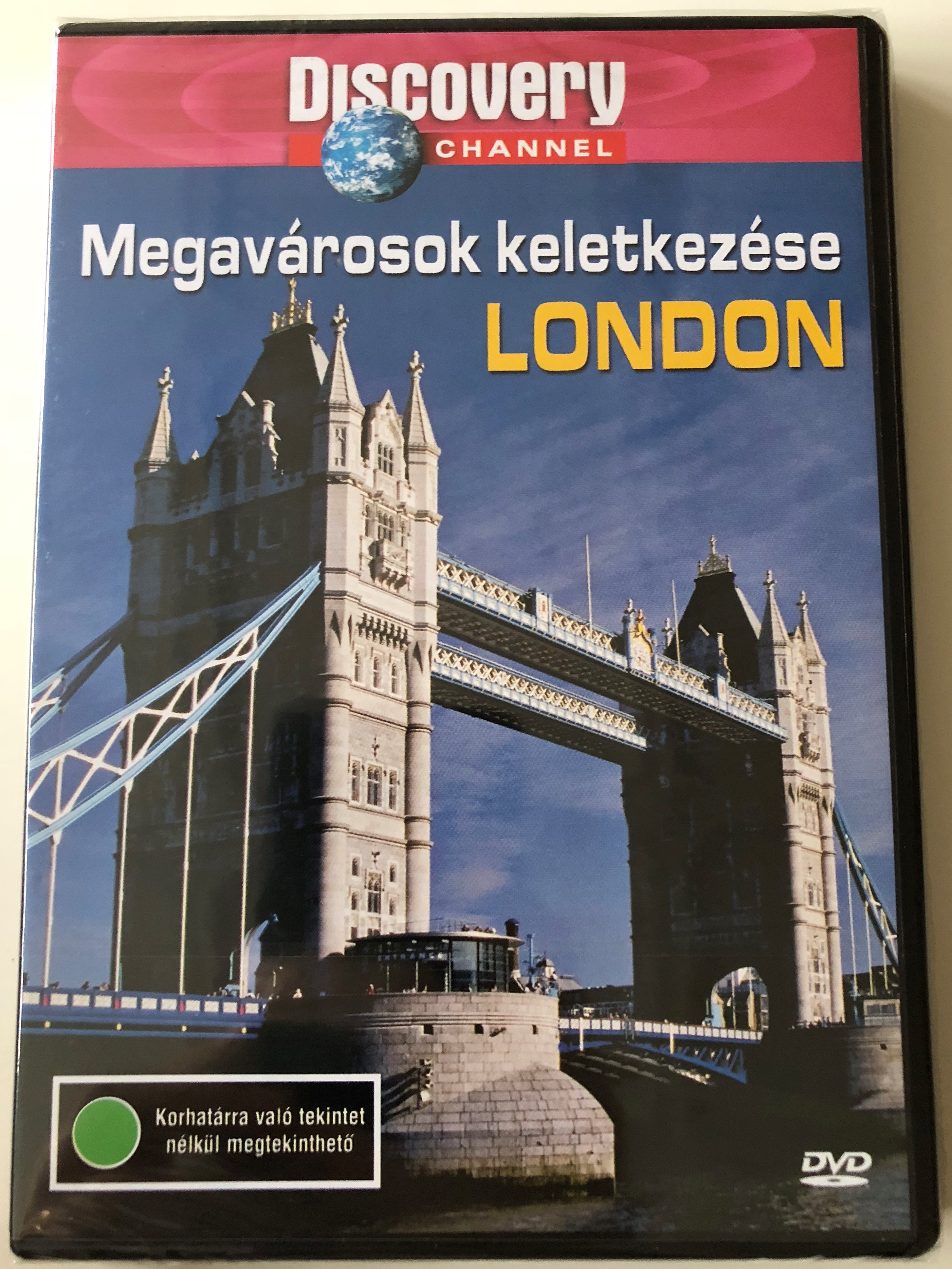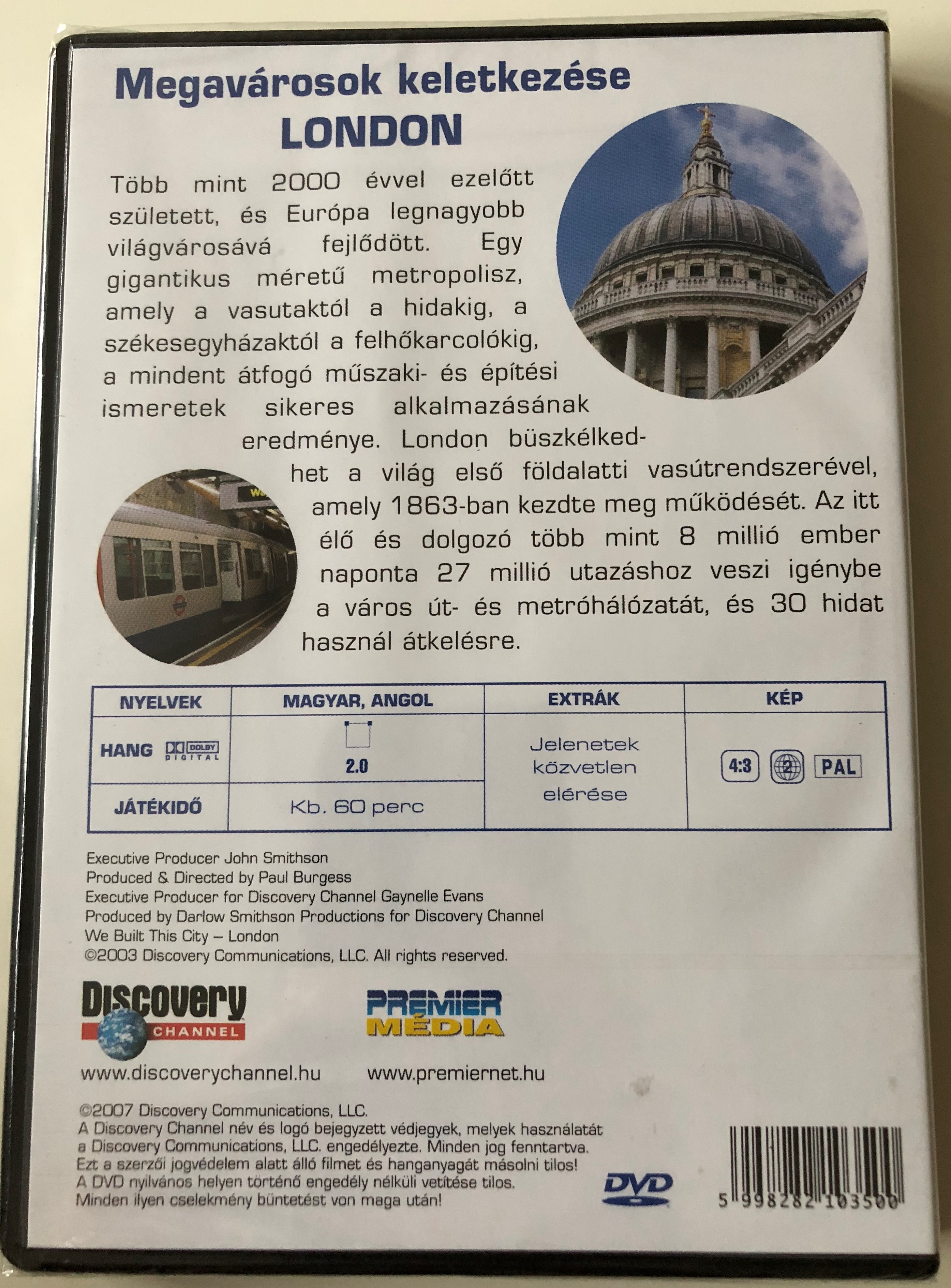Description
Megavárosok keletkezése - London DVD 2003 We built this City - London / Discovery Channel Series
Produced and Directed by Paul Burgess
Executive Producer: John Smithson, Darlow Smithson Productions
UPC 5998282103500
REGION 2 PAL DVD
MADE IN HUNGARY
AUDIO: Hungarian 2.0, English 2.0
Playtime: 60 minutes
Hungarian Summary
Több mint 2000 évvel ezelőtt született, és Európa legnagyobb világvárosává fejlődött. Egy gigantikus méretű metropolisz, amely a vasutaktól a hidakig, a székesegyházaktól a felhőkarcolókig, a mindent átfogó műszaki- és építési ismeretek sikeres alkalmazásának eredménye. London büszkélkedhet a világ első földalatti vasútrendszerével is, amely 1863-ban kezdte meg működését. Az itt élő és dolgozó több, mint 8 millió ember naponta 27 millió utazáshoz veszi igénybe a város út- és metróhálózatát, és 30 hidat használ átkelésre.
Extrák:
interaktív menü, közvetlen jelentválasztás
English Summary
Between 1666 and 1821, London’s population rose from half a million to 1.2 million. As the center of the British Empire, London became the hub of world trade. The first Great Exhibition was held at London’s Crystal Palace in 1851 and it confirmed Great Britain’s role as the leading industrial nation. The population continued to climb quickly, partly due to the influx of immigrants from the colonies, rising to 6.6 million by 1901. During World War II, around 35% of the city was destroyed by German air raids. Amazingly St. Paul’s Cathedral remained virtually unscathed, even though it stood right at the heart of the devastation that cost 10,000 lives. London was able to rebuild its economic might following the war and, by the end of the 1950s, most of the damage had been repaired. In 1965, London’s neighboring suburbs, which were home to countless workers, became part of the city - the urban sprawl that is Greater London was born. It covers an area stretching to around 1,580 square kilometers and is divided into a total of 32 districts, or boroughs. Of the total population of 7.7 million, approximately 2.7 million live in the central parts of the city that make up Inner London. Today the city remains a royal residence and host to the government, the Houses of Parliament, courts of law and major public authorities. As the capital of Great Britain, a financial, commercial and administrative center and a cultural and political focal point for the entire nation, London is truly one of the largest cities on the globe.
London (/ˈlʌndən/ (![]() listen) LUN-dən) is the capital and largest city of both England and the United Kingdom. Standing on the River Thames in the south-east of England, at the head of its 50-mile (80 km) estuary leading to the North Sea, London has been a major settlement for two millennia. Londinium was founded by the Romans. The City of London, London's ancient core − an area of just 1.12 square miles (2.9 km2) and colloquially known as the Square Mile − retains boundaries that follow closely its medieval limits. The City of Westminster is also an Inner London borough holding city status. Greater London is governed by the Mayor of London and the London Assembly.
listen) LUN-dən) is the capital and largest city of both England and the United Kingdom. Standing on the River Thames in the south-east of England, at the head of its 50-mile (80 km) estuary leading to the North Sea, London has been a major settlement for two millennia. Londinium was founded by the Romans. The City of London, London's ancient core − an area of just 1.12 square miles (2.9 km2) and colloquially known as the Square Mile − retains boundaries that follow closely its medieval limits. The City of Westminster is also an Inner London borough holding city status. Greater London is governed by the Mayor of London and the London Assembly.























